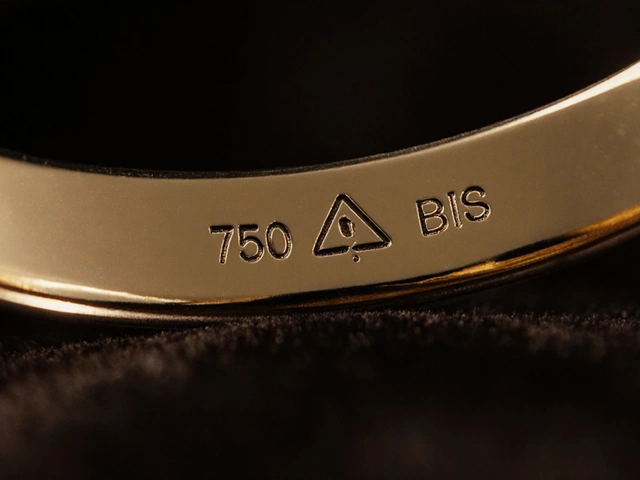Jewelry Hallmarks: Quick Guide to Spotting Real Gold and Silver Stamps
If you’ve ever wondered what those tiny numbers and letters on a ring mean, you’re not alone. Hallmarks are the clues that tell you if a piece really is gold, silver, or something else. Understanding them can save you from paying for fake metal and give you confidence when you shop.
What a Hallmark Looks Like
Most hallmarks are a set of stamps on the inside of a ring, the back of a pendant, or the clasp of a bracelet. In India, the Bureau of Indian Standards (BIS) requires a mandatory IS 947 mark on all gold items. You’ll also see purity stamps like 916 for 22‑carat gold, 875 for 21‑carat gold, or 833 for 80‑percent silver. The BIS logo often appears as a stylized ‘BIS’ inside a circle.
Silver pieces usually carry 925 (sterling silver) or 800/833 marks. The numbers represent the percentage of pure metal: 925 means 92.5 % silver, 833 means 83.3 % silver. Some older items might have the old 625 mark, which means 62.5 % silver.
How to Read and Verify Hallmarks
First, locate the stamps. They’re often hidden in the bow of a ring or under a clasp. Use a good magnifying glass or a jeweler’s loupe – a 10× magnification works fine.
Next, match the numbers to a purity chart. If you see 875, you’re looking at 21‑carat gold (87.5 % pure). If it says 916, that’s 22‑carat gold (91.6 % pure). For silver, 833 translates to 80 % silver – the rest is copper, which adds strength.
Check the BIS logo. A legit BIS stamp will have the word “BIS” inside a circle and a six‑digit alphanumeric code (the BIS certification number). If the code is missing or looks altered, be cautious.
Finally, do a quick weight test. Pure gold is heavy; a 10‑gram 22‑carat gold ring will feel denser than a similarly sized 18‑carat piece. If it feels too light for the size, the metal might be plated.
These steps don’t replace a professional appraisal, but they give you a solid first check before you hand over cash.
Remember, hallmarks are not just numbers – they’re legal guarantees. In India, selling unstamped gold or silver is illegal, so reputable sellers will always provide clear stamps and a BIS certificate. When you spot a missing or unclear hallmark, ask the seller for proof or walk away.
Knowing how to read hallmarks lets you shop with confidence, whether you’re buying a wedding band, a traditional mangalsutra, or a silver pendant. Keep this guide on hand, and the next time you see a sparkle, you’ll know exactly what you’re looking at.
KK Mark on Jewelry: What Does It Really Mean?
Ever spotted 'KK' engraved inside a ring or pendant and wondered what it means? This article breaks down the mystery behind the KK mark on jewelry, its origin, and why it appears on antique pieces. Learn how to recognize genuine KK markings, understand their value, and avoid falling for lookalikes. Plus, get tips for collectors and buyers looking for authentic antique finds. Find out how this tiny mark can tell a big story about craftsmanship and history.





